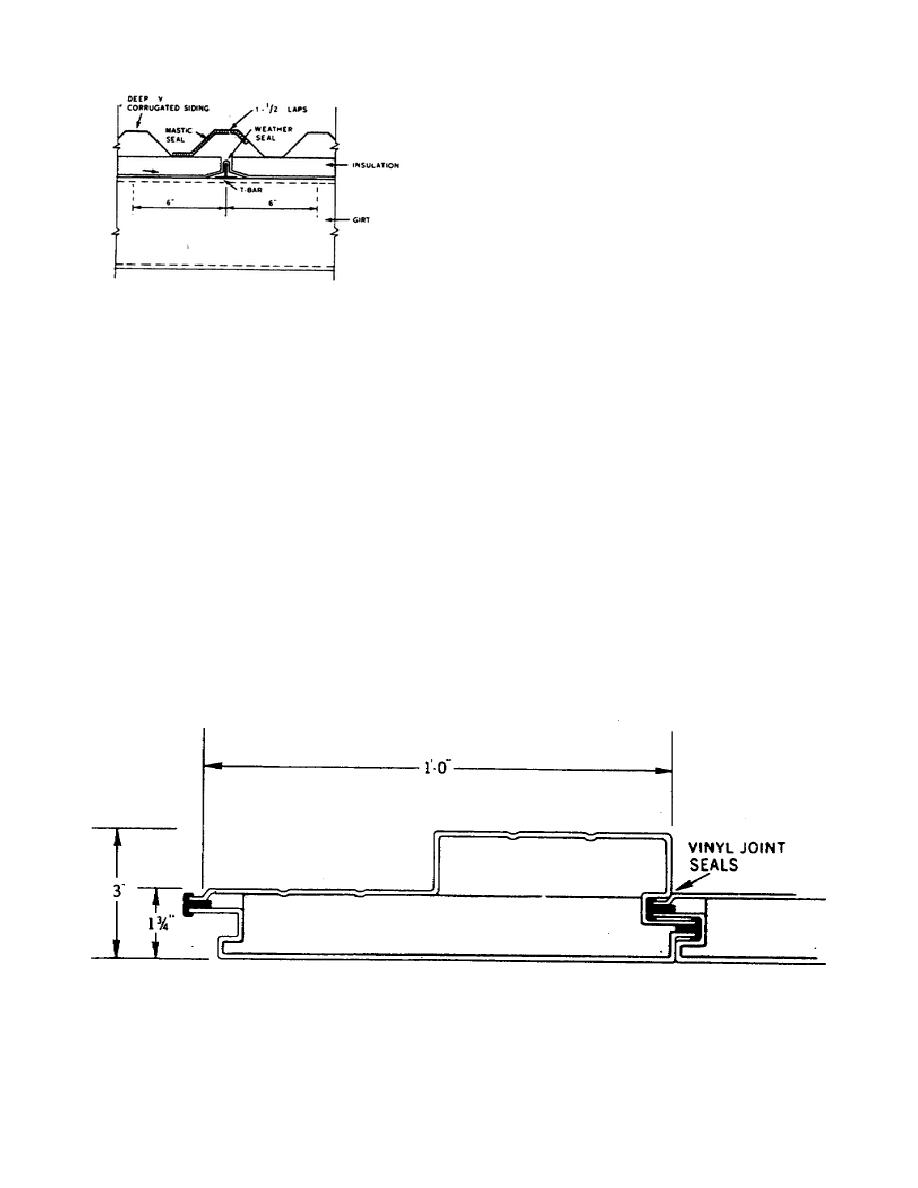
layer of insulation or it may be some other type of
material. Figure 38 shows two insulated panels joined
together with a vertical joint. With this type of
installation, the T-bar is secured to the wall girts, and the
metal weather seal is placed over the T-bar to provide a
durable, moisture-proof joint. The insulation of the first
panel butts against the weather seal, and the metal siding
laps over the joint. The next panel has the insulation
butted against the weather seal, and the metal siding laps
over the previous sheet to form a lap joint of 1 1/2 laps.
A mastic seal is applied to the area of the lap before the
second panel is installed. This mastic seal is permanent
and should never have to be replaced, except when the
panel is replaced or the building in disassembled and
Figure 38. Deep V-wall panel.
relocated.
5-18. Another type of ribbed wall panel that has an
and the siding. Angles also fit between the Z-shaped wall
insulated core is shown in figure 39. This panel has vinyl
girts to provide a fastening surface for the window frame.
joint seals inserted along the edges. The vertical edges fit
5-16. Notice the brace rods in figure 37. These brace
together as do those of tongue and groove boards to make
rods are used to square the end bays of the building. The
a weatherproof joint.
brace rods in the wall run diagonally from the top of one
5-19. The lap joint and the vinyl seal joint are the two
column to the bottom of the adjoining column. The rods
common methods used to make weatherproof vertical
pass through slots in the columns, and a bevel washer, flat
joints in exterior walls. The mastic seal used in the lap
washer, and nut are used on the ends of the rods.
joint of insulated panels is also used with sheetmetal
Turnbuckles are used at an intermediate point in the rod to
siding and roofing. The mastic comes in strips with a
provide for adjustment. The turnbuckle has a right-hand
moisture-proof paper backing that looks like masking
thread in one end and a left-hand thread in the other so
tape. The strips are rolled like tape for easy handling.
that it can be tightened or loosened on each section of the
You unroll the tape and apply the mastic and backing on
rod at the same time. Adjustments may also be made by
the joint area. Leave the paper backing on the mastic
tightening or loosening the nuts on the end of the rods.
until you are ready to install the next panel. Just peel the
When you tighten one rod, you must loosen the one that
paper off to expose the clean layer of mastic when you are
crosses it to provide for a shift in the framing. The brace
ready to cover the joint. This mastic is also required in
rods between the roof beams serve to hold the bay square
the horizontal joints of roof panels to prevent water from
and must be considered if you adjust the brace rods
being blown under the top panel.
enough to cause a shift in the frame.
5-20. When horizontal joints are required in
5-17. Wall and roof coverings. The metal wall
covering may be a panel that contains a
Figure 39. Ribbed wall panel.
22



 Previous Page
Previous Page
